This is the fifth of a series of follow up reports by Acts 8 on the recipients of funded through The Episcopal Church budget. The $100,000 grants are matched by local money to make new church starts possible to communities that would not otherwise have the resources to start a new congregation. Brad Bates reports here on Our Lady of Guadalupe, Seattle, which received a grant from the 2012-2015 budget of the church.
Our Lady of Guadalupe Episcopal Church, Seattle, is a bicultural, bilingual, progressive Latino ministry in the Anglo-Catholic tradition. Bolstered by a contribution from the Episcopal Church and a matching endowment from the Diocese of Olympia, the Rev. Alfredo Feregrino planted the Our Lady of Guadalupe congregation in 2014 with a focus on urban Latinos, new-generation Latinos, while also reaching Anglos and non-Latinos.
 Our Lady of Guadalupe takes Latino culture and traditions and put them in the midst of Anglo-Catholic worship. They celebrate five Latino cultural festivals each year – Cinco de Mayo, Fiestas Patrias, Dia de Muertos, Our Lady of Guadalupe, Las Posadas and Pastorelas – while incorporating artistic elements of faith and spirituality throughout the liturgical year. This approach can appeal to Latinos and many of whom have never heard of the Episcopal Church, as well as long-time Episcopalians, even if they speak little or no Spanish. All are welcomed and feel loved at our Lady of Guadalupe.
Our Lady of Guadalupe takes Latino culture and traditions and put them in the midst of Anglo-Catholic worship. They celebrate five Latino cultural festivals each year – Cinco de Mayo, Fiestas Patrias, Dia de Muertos, Our Lady of Guadalupe, Las Posadas and Pastorelas – while incorporating artistic elements of faith and spirituality throughout the liturgical year. This approach can appeal to Latinos and many of whom have never heard of the Episcopal Church, as well as long-time Episcopalians, even if they speak little or no Spanish. All are welcomed and feel loved at our Lady of Guadalupe.
Feregrino was the first Latino ordained in his diocese, and is currently the only church planter. He his ministry is one of radical inclusion and hospitality to men and women who may find themselves socially and economically marginalized. “The goal,†he says, “is to bring those who are out on the margins back to the center,†which is why the Virgin of Guadalupe was selected as the patron saint. The Virgin of Guadalupe is “a symbol of unity that ties perfectly with the mission of the church, which as stated in the Book of Common Prayer’s catechism, is ‘to restore all people to unity with God and each other in Christ’†(p. 855).
“Unity is the core of my theology,†said Feregrino, “which finds its roots in two specific biblical passages. The first is Jesus’ Prayer for unity found in the Gospel of John, which conveys the idea that Jesus kept believers in their faith through divine power: ‘Holy Father, protect them in your name that you have given me, so that they may be one, as we are one’ (17:11, NRSV).
 “The second passage is Paul’s letter to the Galatians: ‘there is no longer Jew or Greek, there is no longer slave or free, there is no longer male and female; for all of you are one in Christ Jesus’ (3:28). Paul is declaring the distinctions of race, social status, and gender, which may generally divide people, no longer apply to those in Christ. A new creation is possible; one in which ethnic distinctions no longer matter because we all are one in Christ. It is not that people cease to be male or female; rather, these distinctions are not grounds for exclusion from the life that God offers all persons in Christ. This is not only what I believe as a steward of God’s mysteries, but this is the foundation of the theology of our ministry. Furthermore, this is the reason everybody is welcome to the table at Our Lady of Guadalupe.â€
“The second passage is Paul’s letter to the Galatians: ‘there is no longer Jew or Greek, there is no longer slave or free, there is no longer male and female; for all of you are one in Christ Jesus’ (3:28). Paul is declaring the distinctions of race, social status, and gender, which may generally divide people, no longer apply to those in Christ. A new creation is possible; one in which ethnic distinctions no longer matter because we all are one in Christ. It is not that people cease to be male or female; rather, these distinctions are not grounds for exclusion from the life that God offers all persons in Christ. This is not only what I believe as a steward of God’s mysteries, but this is the foundation of the theology of our ministry. Furthermore, this is the reason everybody is welcome to the table at Our Lady of Guadalupe.â€
Our Lady of Guadalupe is a small congregation that shares worship space with St. Paul’s Episcopal Church. Feregrino appreciates this relationship. “Although difficulties can and often do arise when sharing space with another church, not having our own building is a good thing because we do not have to worry about expenses associated with owning a building.†Moreover, without permanent building, Our Lady of Guadalupe is better able to “foster unity with other congregations in the community. Not having a facility to limit us to one location gives us more of an opportunity to be the hands and feet of Jesus in our community. Instead of focusing on numbers and rooms, we are able to concentrate on the mission of transforming people into mature disciples for Christ.â€
When asked what information, or bits of wisdom, he might pass on to people thinking of planting a church, Feregrino discussed the importance of thinking a plan through, understanding the theology of ministry, and having the willingness to work with different people. “The oneness of the church is a sign and witness to the world that Jesus was who he said he was. The implications of getting this wrong are significant. Therefore, by building bridges of radical hospitality and inclusion, we can all participate in God’s dream of unity where everyone is not only invited to the table, but also able to experience the source of love that is indiscriminate, abundant, and unconditional. Most importantly, though, be humble enough to understand you are not in control. It is God’s church,†he reminds us, “and it will make it with or without you.â€
For more information, visit Our Lady of Guadalupe’s website,

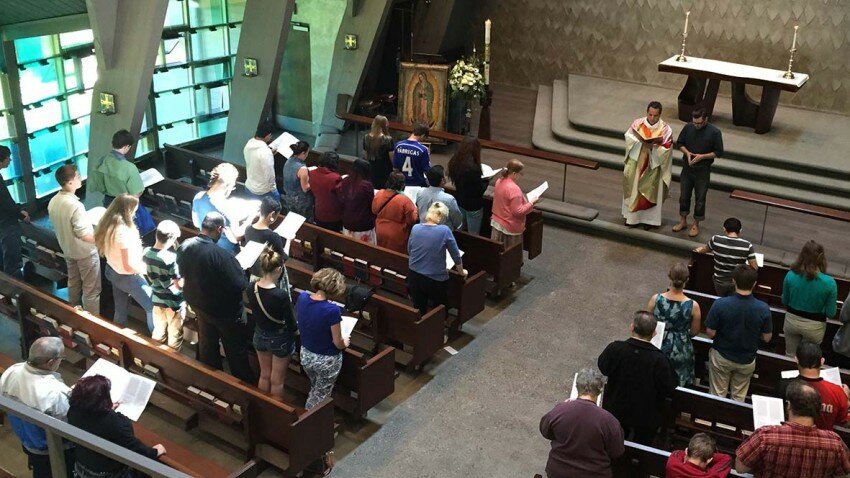


 We started brainstorming factors that have helped Grace Church grow, and the good news is that most of them are FREE! The biggest factors are a vision and an emphasis on reaching new people, welcoming them, and including them in the life of the church. There is an energy at Grace Church that new people feel. They realize that we want them there – we want to learn their story and to share our story with them. This is engrained in our Rule of Life when we talk about Authentic Relationships. So, Grace Church really wants to grow and we’ve created a culture of invitation, hospitality and inclusion and set up intentional processes to do this. We strive to put this into practice everyday.
We started brainstorming factors that have helped Grace Church grow, and the good news is that most of them are FREE! The biggest factors are a vision and an emphasis on reaching new people, welcoming them, and including them in the life of the church. There is an energy at Grace Church that new people feel. They realize that we want them there – we want to learn their story and to share our story with them. This is engrained in our Rule of Life when we talk about Authentic Relationships. So, Grace Church really wants to grow and we’ve created a culture of invitation, hospitality and inclusion and set up intentional processes to do this. We strive to put this into practice everyday. Every church re-vitalization is unique. Ministry is an art, not a science, they say. Re-vitalizations and redevelopments are about creating energy and momentum. There are many re-vitalizations tactics that could do some of the above work and create missional energy and health within a congregation causing it to grow. But it depends on how much momentum a church has and how quickly you need/want to ramp up the momentum.
Every church re-vitalization is unique. Ministry is an art, not a science, they say. Re-vitalizations and redevelopments are about creating energy and momentum. There are many re-vitalizations tactics that could do some of the above work and create missional energy and health within a congregation causing it to grow. But it depends on how much momentum a church has and how quickly you need/want to ramp up the momentum. This essentially left us with the start of a launch team for a new church, which would become Grace. We started meeting and inviting new people to attend community events and some to join the Launch Team. The Launch Team started creating the vision for Grace Church, our Rule of Life, clarity of our mission field, etc. The hard re-start/church plant method created a lot of Spirt-driven momentum and a lot of energy, as church plants frequently do.
This essentially left us with the start of a launch team for a new church, which would become Grace. We started meeting and inviting new people to attend community events and some to join the Launch Team. The Launch Team started creating the vision for Grace Church, our Rule of Life, clarity of our mission field, etc. The hard re-start/church plant method created a lot of Spirt-driven momentum and a lot of energy, as church plants frequently do. Simply put, it takes money to do ministry. It takes dioceses and bishops willing to invest in people and resources. This is absolutely essential for re-starts and church plants. Maybe your diocese has it or maybe you will have to raise it. But money does follow mission. If God has planted a call in you to start a new church or to re-start a church, the money is out there. It just needs to be invited to be used for the Kingdom of God.
Simply put, it takes money to do ministry. It takes dioceses and bishops willing to invest in people and resources. This is absolutely essential for re-starts and church plants. Maybe your diocese has it or maybe you will have to raise it. But money does follow mission. If God has planted a call in you to start a new church or to re-start a church, the money is out there. It just needs to be invited to be used for the Kingdom of God. Do we believe the Episcopal Church has Good News to share?
Do we believe the Episcopal Church has Good News to share?
 Our Savior became Grace as the new vision and new sense of calling needed a new name, like Saul becoming Paul as he responded to the call to be an Apostle to the Gentiles. They became a church for post-evangelical Christians who as Tim says, “Don’t want to give up Jesus, but they need a new lens for the Bible, for theology, and for how to do church.â€
Our Savior became Grace as the new vision and new sense of calling needed a new name, like Saul becoming Paul as he responded to the call to be an Apostle to the Gentiles. They became a church for post-evangelical Christians who as Tim says, “Don’t want to give up Jesus, but they need a new lens for the Bible, for theology, and for how to do church.â€ Newly graduated from seminary, the Baers looked around their mission field, which was a little more than 5-mile radius, and asked where they fit into the church landscape. The two priests realized their niche was a “third way†in a via media between traditional organ and choir led worship and the contemporary mega-church rock band churches that are so entertainment driven. Kirsten says, “We blend old and new, ancient and modern, and connect liturgy and sacraments to people’s lives.†Tim adds, “Some people come to Grace and say ‘whoa, this is really traditional’ and others say, ‘whoa, this is really contemporary.’ We consider that a good thing – it means we’ve struck the via media.â€
Newly graduated from seminary, the Baers looked around their mission field, which was a little more than 5-mile radius, and asked where they fit into the church landscape. The two priests realized their niche was a “third way†in a via media between traditional organ and choir led worship and the contemporary mega-church rock band churches that are so entertainment driven. Kirsten says, “We blend old and new, ancient and modern, and connect liturgy and sacraments to people’s lives.†Tim adds, “Some people come to Grace and say ‘whoa, this is really traditional’ and others say, ‘whoa, this is really contemporary.’ We consider that a good thing – it means we’ve struck the via media.â€ The vision for Grace included those who were already part of the congregation becoming evangelists too. Kirsten recalls that those existing members who had the courage to join in the rebirth became passionate and excited about creating a Christian community that could spark a connection with their children and grandchildren. Kirsten said, “We emphasized our hope of being an intergenerational church and they also desperately wanted that.â€
The vision for Grace included those who were already part of the congregation becoming evangelists too. Kirsten recalls that those existing members who had the courage to join in the rebirth became passionate and excited about creating a Christian community that could spark a connection with their children and grandchildren. Kirsten said, “We emphasized our hope of being an intergenerational church and they also desperately wanted that.â€ Thirty percent of the congregation trained as Hospitality members. While there is a rotation, the saying is that “Even when you are not on duty, you are on duty.†Within 48 hours they get a phone call, email or card depending on the information provided. The retention rate for those who attend is roughly fifty percent. Beyond this hospitality, there is always something new to invite others to and there are lots of ways to connect to the community.
Thirty percent of the congregation trained as Hospitality members. While there is a rotation, the saying is that “Even when you are not on duty, you are on duty.†Within 48 hours they get a phone call, email or card depending on the information provided. The retention rate for those who attend is roughly fifty percent. Beyond this hospitality, there is always something new to invite others to and there are lots of ways to connect to the community. In the last year, Grace Church not only launched a second Sunday morning liturgy, but they also started a youth ministry and formed three outreach ministry teams—a hunger team, a mentor ministry team, and a laundry love ministry. Now as they are past year two, the challenge has been to create more committees. “It’s not sexy, but it has been essential work to support the ministry and growth,†Tim says.
In the last year, Grace Church not only launched a second Sunday morning liturgy, but they also started a youth ministry and formed three outreach ministry teams—a hunger team, a mentor ministry team, and a laundry love ministry. Now as they are past year two, the challenge has been to create more committees. “It’s not sexy, but it has been essential work to support the ministry and growth,†Tim says.


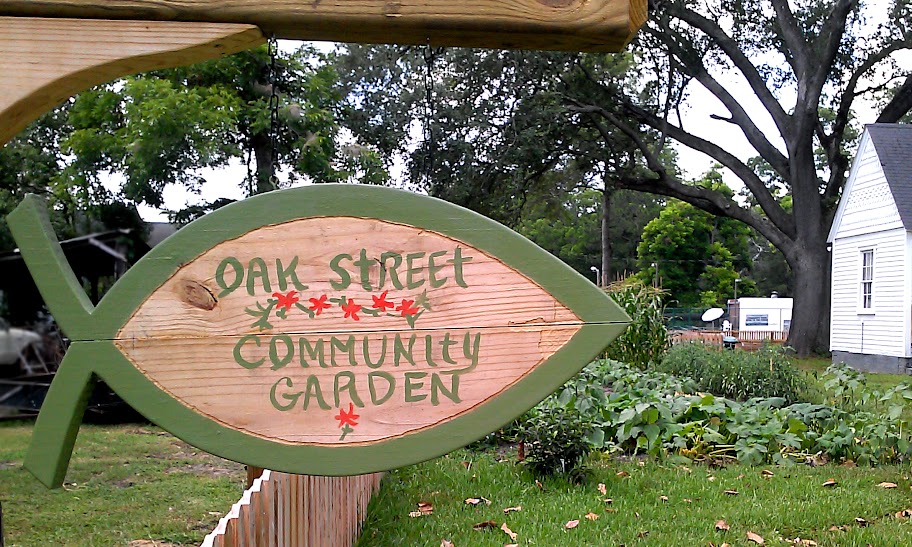 Three Episcopal churches in Thomasville, Georgia, founded in racial and doctrinal differences are working together to help the residents develop a plan to help themselves-a plan that will initially allow them to address neighborhood hunger, and later, empower them to address many of the other issues that are facing their community.
Three Episcopal churches in Thomasville, Georgia, founded in racial and doctrinal differences are working together to help the residents develop a plan to help themselves-a plan that will initially allow them to address neighborhood hunger, and later, empower them to address many of the other issues that are facing their community. Toua Vang recalls how his Hmong community felt like lost sheep, without a place for them to gather as God’s people. A Church Planting Grant underwrites the work Vang is doing in Minneapolis, but also “Hmong/Southeast Asia Ministry Probes†among Hmong in Olympia, Washington and Colorado.
Toua Vang recalls how his Hmong community felt like lost sheep, without a place for them to gather as God’s people. A Church Planting Grant underwrites the work Vang is doing in Minneapolis, but also “Hmong/Southeast Asia Ministry Probes†among Hmong in Olympia, Washington and Colorado. See what grows out of an Episcopal/Lutheran campus ministry when they acquire a 4-acre farm and open up The Abundant Table in radically inclusive hospitality. This church start is also an Episcopal Service Corps site offering an internship combining communal living, work on the farm, learning about food injustice and self-sufficiency skills.
See what grows out of an Episcopal/Lutheran campus ministry when they acquire a 4-acre farm and open up The Abundant Table in radically inclusive hospitality. This church start is also an Episcopal Service Corps site offering an internship combining communal living, work on the farm, learning about food injustice and self-sufficiency skills.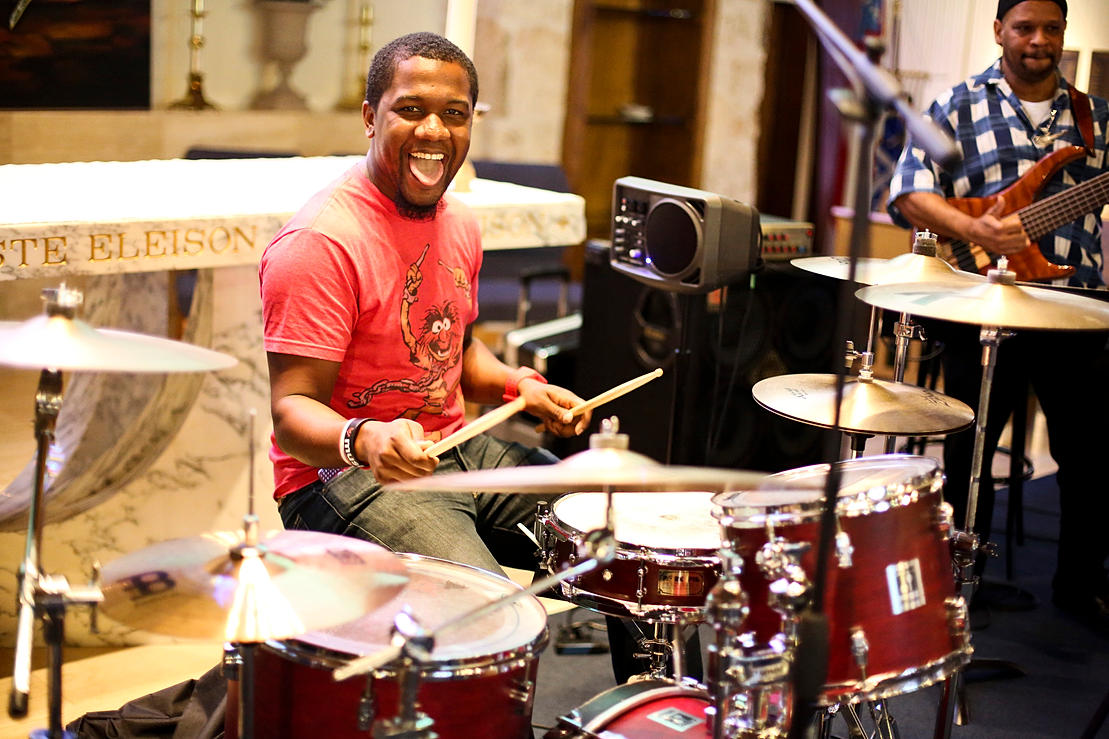 St. Joe’s Unplugged is a mission of St. Joseph’s in Boynton Beach, Florida, whose focus is to attract people in their 20s and 30s, the unchurched, the de-churched, and those looking for a Fresh Expression of worship. They are learning to risk experiential opportunities in worship and to provide means for leadership and outreach.
St. Joe’s Unplugged is a mission of St. Joseph’s in Boynton Beach, Florida, whose focus is to attract people in their 20s and 30s, the unchurched, the de-churched, and those looking for a Fresh Expression of worship. They are learning to risk experiential opportunities in worship and to provide means for leadership and outreach. The Abbey is a new church start in Birmingham, Alabama, influenced by the tradition of monks and nuns teaching, nursing, crafting, and even brewing beer to both support themselves and to bring ordinary folks into contact with religious life. This dedicated team has learned a lot from the courage and faith needed to start something wholly new.
The Abbey is a new church start in Birmingham, Alabama, influenced by the tradition of monks and nuns teaching, nursing, crafting, and even brewing beer to both support themselves and to bring ordinary folks into contact with religious life. This dedicated team has learned a lot from the courage and faith needed to start something wholly new.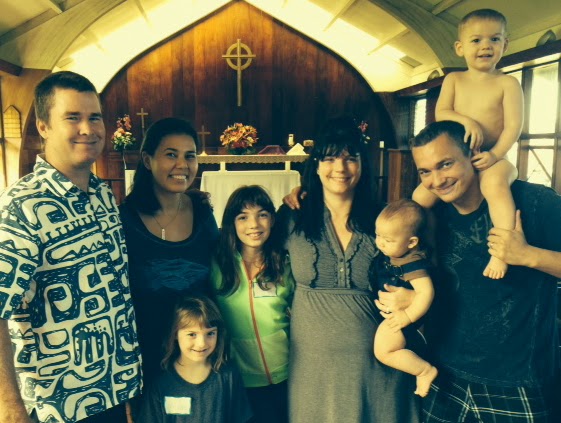 More than a century after its founding, St. Columba’s Episcopal Mission in Pa’auilo, Hawai’i, was down to a handful of the faithful as a preaching station of a neighboring church. They are now experiencing the joy and growing pains of rebirth into a multi-denominational, multicultural, multi-generational congregation.
More than a century after its founding, St. Columba’s Episcopal Mission in Pa’auilo, Hawai’i, was down to a handful of the faithful as a preaching station of a neighboring church. They are now experiencing the joy and growing pains of rebirth into a multi-denominational, multicultural, multi-generational congregation. As sacred space in a secular world, Kairos West Community Center in West Asheville, North Carolina, empowers emerging local leadership through art, liturgy, and social service in the spirit of Jesus. Kairos offers a neutral, open meeting ground and place for collaboration across sub-cultural, socio-economic and racial lines.
As sacred space in a secular world, Kairos West Community Center in West Asheville, North Carolina, empowers emerging local leadership through art, liturgy, and social service in the spirit of Jesus. Kairos offers a neutral, open meeting ground and place for collaboration across sub-cultural, socio-economic and racial lines. In the Diocese of Spokane, the assets and needs of both community and church came together to form a mission exchange bringing youth groups in for short-term missions in two locations. The Pacific Inland Northwest Exchange takes youth out of their home town and shows them poverty somewhere else, where they can see it clearly, so they will have eyes to see the impact of poverty once they are back home.
In the Diocese of Spokane, the assets and needs of both community and church came together to form a mission exchange bringing youth groups in for short-term missions in two locations. The Pacific Inland Northwest Exchange takes youth out of their home town and shows them poverty somewhere else, where they can see it clearly, so they will have eyes to see the impact of poverty once they are back home. Since its founding in 1869, Christ Church in Biddeford, Maine, existed for the mill workers near the church. Attendance dwindled after the mill closed. Rather than focus inward, the remaining church members charted a course that could result in the discontinuance of regular worship services in order to focus on the creation of what the church was to become—The Seeds of Hope Neighborhood Center.
Since its founding in 1869, Christ Church in Biddeford, Maine, existed for the mill workers near the church. Attendance dwindled after the mill closed. Rather than focus inward, the remaining church members charted a course that could result in the discontinuance of regular worship services in order to focus on the creation of what the church was to become—The Seeds of Hope Neighborhood Center.
 Katie knows the area well. She is a cradle Episcopalian who grew up in the same Avondale neighborhood of Birmingham where The Abbey is located. She studied music in college, then went to seminary at Virginia Theological Seminary. Katie and her husband, Josiah, served two small parishes in the Black Belt before moving back to Birmingham.
Katie knows the area well. She is a cradle Episcopalian who grew up in the same Avondale neighborhood of Birmingham where The Abbey is located. She studied music in college, then went to seminary at Virginia Theological Seminary. Katie and her husband, Josiah, served two small parishes in the Black Belt before moving back to Birmingham. Out of this desire to establish what Bishop Kee Sloan described as a “Church without Walls†a unique partnership developed between the diocese and a parish. Rengers will continue as a member of the staff St. Luke’s while serving as The Abbey’s vicar. The Rev. Kelley Hudlow will serve The Abbey as vocational deacon. Carrie Black, a member of the choir at the Cathedral Church of the Advent in Birmingham, has been hired as the coffee shop manager.
Out of this desire to establish what Bishop Kee Sloan described as a “Church without Walls†a unique partnership developed between the diocese and a parish. Rengers will continue as a member of the staff St. Luke’s while serving as The Abbey’s vicar. The Rev. Kelley Hudlow will serve The Abbey as vocational deacon. Carrie Black, a member of the choir at the Cathedral Church of the Advent in Birmingham, has been hired as the coffee shop manager. In reflecting on her more than a year of work on this new start, Rengers said, “At least once a day I tell my husband (who is also a priest) that I’m going to quit my job and renounce my orders.” She added, “But alongside the immense frustration has come incredible spiritual renewal, and a deepening sense of how God is calling the Church to respond to the needs of the 21st century. I’m sure my team would agree that building The Abbey has taken a level of courage and faith that we didn’t know we had.”
In reflecting on her more than a year of work on this new start, Rengers said, “At least once a day I tell my husband (who is also a priest) that I’m going to quit my job and renounce my orders.” She added, “But alongside the immense frustration has come incredible spiritual renewal, and a deepening sense of how God is calling the Church to respond to the needs of the 21st century. I’m sure my team would agree that building The Abbey has taken a level of courage and faith that we didn’t know we had.” Rengers in looking back on the year of work says, “I was comforted by one of my colleague’s sermon words yesterday on the 4th Sunday of Advent: ‘God doesn’t ask us to succeed. He asks us to be faithful.’â€
Rengers in looking back on the year of work says, “I was comforted by one of my colleague’s sermon words yesterday on the 4th Sunday of Advent: ‘God doesn’t ask us to succeed. He asks us to be faithful.’â€ on the farm, learning about food injustice and a variety of essential skills for self-sufficiency. If you are interested in applying for the ESC program next year, the first deadline is Dec.15. Click  to submit an application.Â
on the farm, learning about food injustice and a variety of essential skills for self-sufficiency. If you are interested in applying for the ESC program next year, the first deadline is Dec.15. Click  to submit an application. 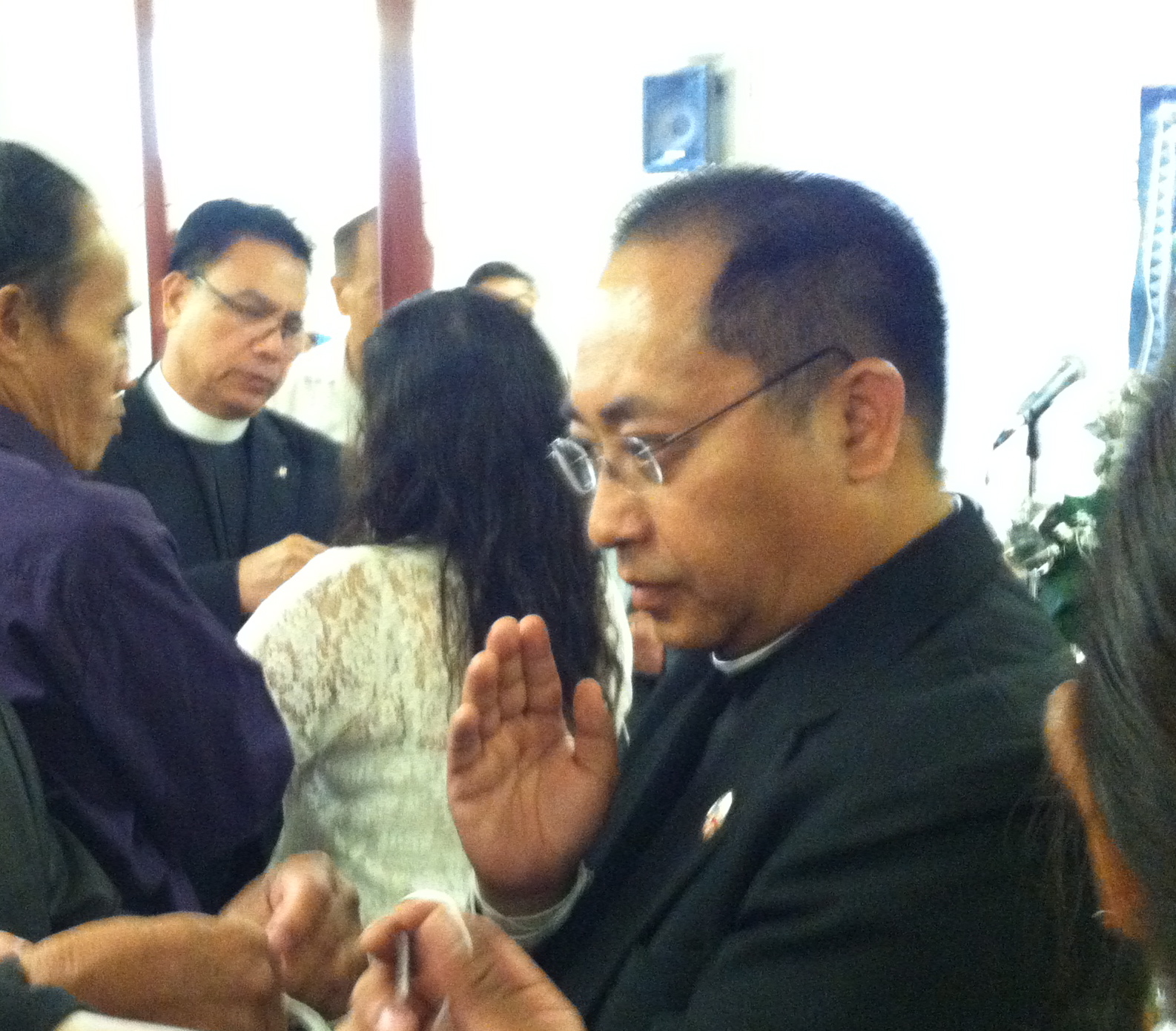 Bishop Brian Prior said of Vang’s ordination, “Toua was identified and affirmed by the community because of his particular gifts and his strong desire to serve both his people and the larger world. Toua has a particular missional zeal that really is very compelling — that you hear from hardly anyone else. He really feels this sense of calling.”
Bishop Brian Prior said of Vang’s ordination, “Toua was identified and affirmed by the community because of his particular gifts and his strong desire to serve both his people and the larger world. Toua has a particular missional zeal that really is very compelling — that you hear from hardly anyone else. He really feels this sense of calling.” The Church Planting Grant made it possible for Vang to work full time in this appointment using Holy Apostles in St. Paul’s Minnesota as a base. A quarter of his time is spent serving in an Associate Vicar position doing evangelism, preaching and teaching in the Twin Cities, so that the mission is well grounded and supported by the Hmong Episcopal community. In the first year, Vang is also spending a quarter of his time focused on acquiring skills and knowledge for the work of evangelism and ministry planting, and the remainder of his time is devoted to the Hmong Ministry Planting Initiative.
The Church Planting Grant made it possible for Vang to work full time in this appointment using Holy Apostles in St. Paul’s Minnesota as a base. A quarter of his time is spent serving in an Associate Vicar position doing evangelism, preaching and teaching in the Twin Cities, so that the mission is well grounded and supported by the Hmong Episcopal community. In the first year, Vang is also spending a quarter of his time focused on acquiring skills and knowledge for the work of evangelism and ministry planting, and the remainder of his time is devoted to the Hmong Ministry Planting Initiative. Vergara preached in a Pentecost sermon with many Hmong baptisms, “Mission no longer means Anglo-Europeans crossing the Pacific Ocean to convert the Asian (Buddhist, Hindu, animists, ancestral worshipers, ‘free thinkers’, etc.) into the Christian faith.” He went on to add, “[Mission is] simply opening the doors of our American hearts and flinging open the doors of our churches to the neighbors whom God has brought to us. As you can see, in this church, the Chinese are among us, the Japanese are among us, the Koreans are among us, the South Asians and Southeast Asians are among us, the Filipinos are among us—and pardon the pun—the Hmong are among us.â€
Vergara preached in a Pentecost sermon with many Hmong baptisms, “Mission no longer means Anglo-Europeans crossing the Pacific Ocean to convert the Asian (Buddhist, Hindu, animists, ancestral worshipers, ‘free thinkers’, etc.) into the Christian faith.” He went on to add, “[Mission is] simply opening the doors of our American hearts and flinging open the doors of our churches to the neighbors whom God has brought to us. As you can see, in this church, the Chinese are among us, the Japanese are among us, the Koreans are among us, the South Asians and Southeast Asians are among us, the Filipinos are among us—and pardon the pun—the Hmong are among us.â€